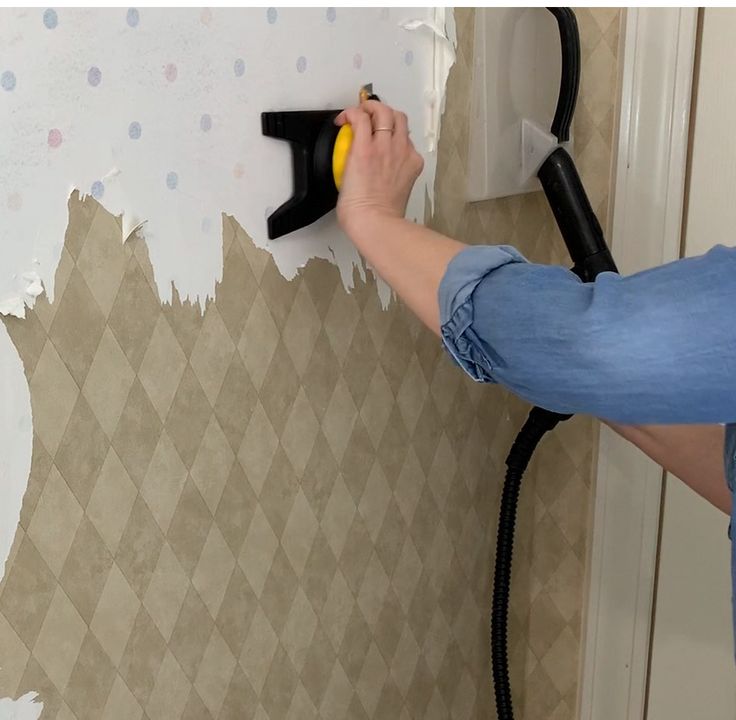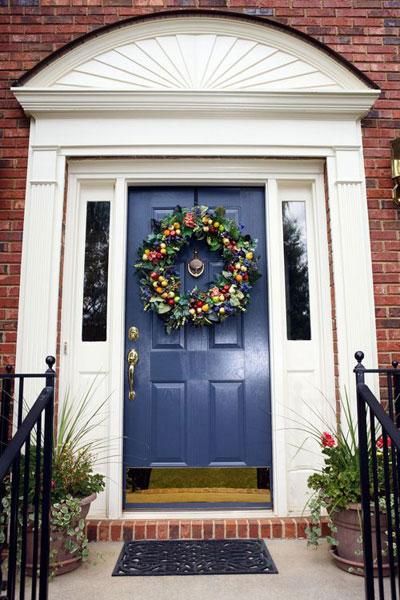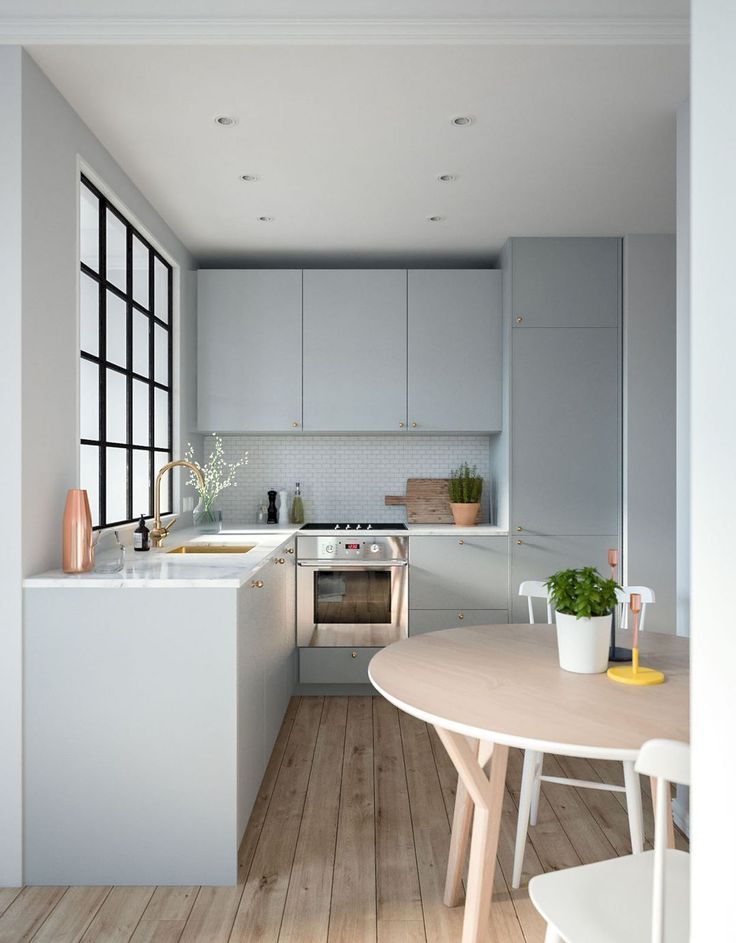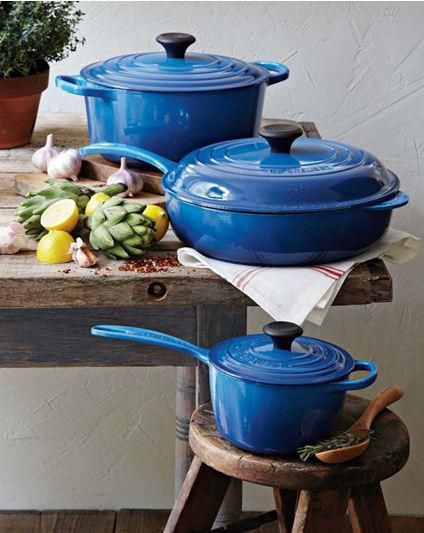Best way to remove a wallpaper border
Easy Ways to Remove Wallpaper Border
Removing wallpaper border can be tricky, whether you’re removing it from a painted wall or a wallpapered one.
Either way, to remove it without damaging the underlying walls or wallpaper, you’ll need to take your time. Below we’ve laid out the steps for the best way to remove wallpaper borders—without damaging your walls in the process.
How to Remove Wallpaper Border
Most wallpaper borders are easy to remove, especially those manufactured in relatively recently. The main tools it generally takes are a putty knife and some perseverance to lift the decorative accent and remove it without too much trouble.
Tools You’ll Need
- Plastic sheet or drop cloth
- Wallpaper scraper or putty knife
- Spray bottle
- Bucket
- Fabric softener
- Sponge
- Heat gun or wallpaper steamer
- Chemical wallpaper remover
- Wallpaper scoring tool
- Orbital sander with 40-60 grit paper
Steps for Removing Wallpaper Border:
- Move furniture and other items into the middle of the room and cover with a plastic sheet or drop cloth.
- With a wallpaper scraper or putty knife, locate a seam and lift a bottom corner of the wallpaper border.
- Once a large enough section is peeled back with the knife, slowly peel the paper away by hand, applying steady and even pressure so it doesn’t tear. For areas that resist, slide the knife or scraper under the paper as you pull to loosen the glue’s grip.
- Once all the adhesive has been removed, wipe the area with a clean sponge and hot soapy water (dish soap will work), making sure you’ve removed all the residue, and allow it to dry.
Other Ways to Remove Wallpaper Border
If the border doesn’t come off easily or keeps tearing, leaving you to chip peel off pieces off bit by bit, step up the removal process with the following methods.
Warm Water and a Putty Knife
- Fill a spray bottle with warm-to-hot water.
- Spray the wallpaper so that it absorbs the water, but not so much that you damage any underlying wallpaper.
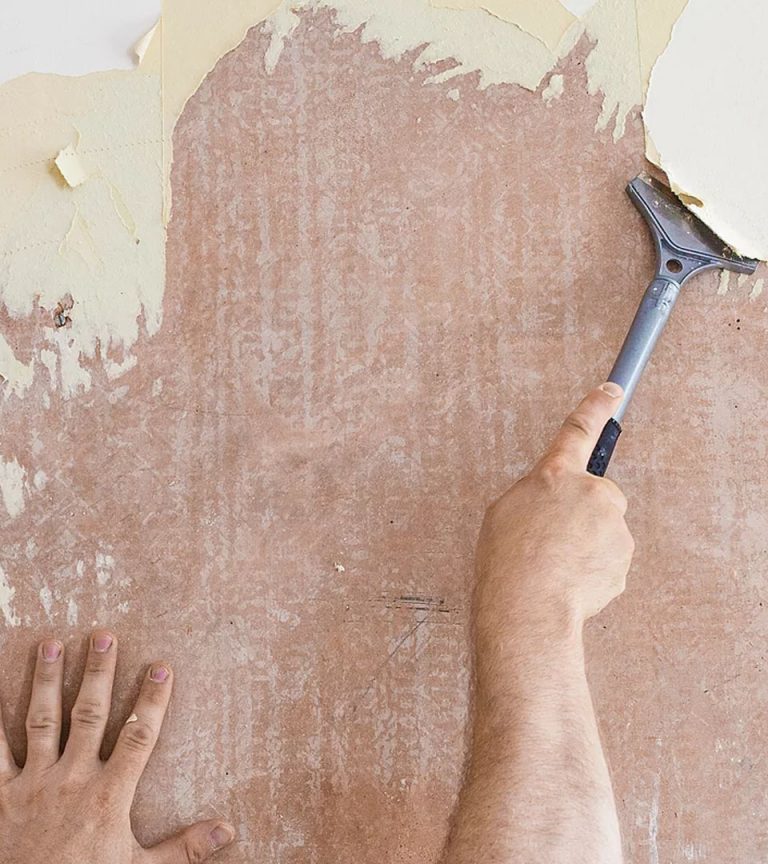
- Allow the water to penetrate the border, about ten minutes. This will loosen the glue and allow the paper and backing to be removed with less resistance.
- Using the same method as above, insert the putty knife under an edge and pull the paper back, using the putty knife to assist where necessary.
- For stubborn spots, spray more warm water, wait a few minutes, and tackle the area again.
Fabric Softener and Water
- Mix equal parts water and fabric softener in a spray bottle, shake and spray onto the wallpaper.
- Allow the solution to penetrate the border for 5-10 minutes before attempting to scrape it off with a putty knife or scraper.
- For an eco-friendly solution, use white vinegar instead of fabric softener, and follow the same steps as above.
Heat Gun or Wallpaper Steamer
- For a hard-to-remove wallpaper border on a painted wall, apply high heat from a wallpaper steamer or heat gun (a hairdryer may work in a pinch).
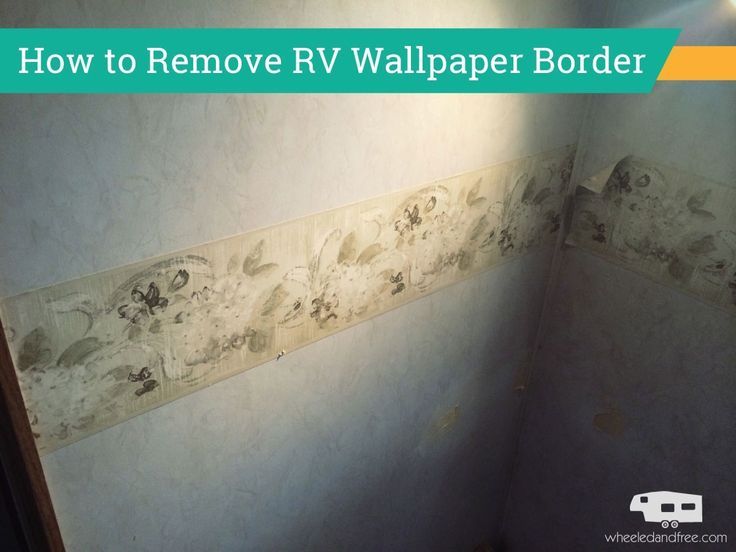
- Once the border’s been heated enough to melt the glue, use your scraper to peel it back.
- If using a steamer or heat gun, be sure to follow the manufacturer’s instructions and wear protective gloves, clothing, and safety goggles—steamers drip hot water and heat guns can burn skin easily.
- Do not use a heat gun or steamer for a border that’s adhered to wallpaper you’re trying to salvage—the heat may also melt the glue of the wallpaper, causing it to bubble and pull away from the wall.
Chemical Wallpaper Remover
If the paper still resists, enlist the help of a wallpaper removal product, following the directions on the label.
- For a particularly stubborn wallpaper border, you can score the paper every 6 to 12 inches with a wallpaper scoring tool before applying the remover.
- A scoring tool makes tiny holes in the paper you only need a little bit of pressure; if you press too hard, you’ll damage your wall. Allowing the solution to penetrate the backing will make the border’s removal easier.
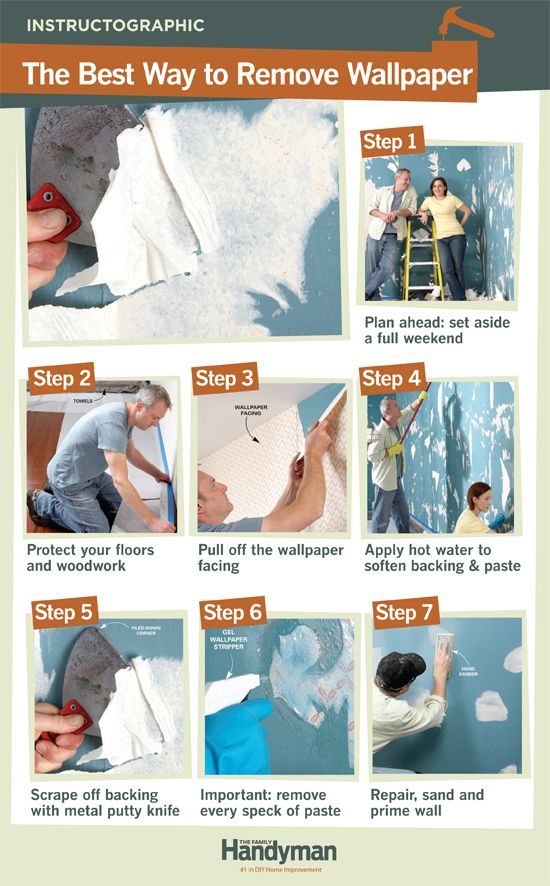
- Then, using the same method detailed above, lift the paper with the putty knife to remove as much of the paper as possible in large chunks.
- If you need to, apply additional remover for stuck-on parts, waiting an additional 5 minutes for the remover to penetrate the glue.
Orbital Sander
- For super-stuck-on wallpaper border pieces, an orbital sander with 40-60 grit paper can sand away the top layer.
- Once the top layer is removed, spray down the remaining backing with warm water, wait a few minutes for the glue to loosen, and remove the border remnants with your putty knife.
- Removing wallpaper border while trying to salvage the wallpaper underneath: In an ideal world, the wallpaper border will easily peel off, without pulling the wallpaper up along with it.
- If it is proving to be stubborn, any other method has the potential to damage the wallpaper you are trying to save. And, depending on how much sunlight the room receives, the wallpaper under the border may be darker than the rest of the wallpaper.
 It’s best to determine if it is worth your time and effort to try and save the wallpaper.
It’s best to determine if it is worth your time and effort to try and save the wallpaper.
How to Remove Wallpaper - Best Way to Remove Wallpaper Border and Glue
Wallpaper is in vogue again, but that doesn't necessarily mean the wallpaper (or old-school border!) you inherited from previous homeowners is your style. If it's time for it to come down, fear not. You can accomplish the task without losing your mind with this simple guide to how to remove wallpaper.
Once it's down you can add a punch of style back to the wall with a new pattern (perhaps a removable wallpaper that will peel off with ease in the future) or a fresh coat of paint (try one of our editors' favorite wall colors). You might even be able to paint over your wallpaper, but be sure to read up on when it works and when it doesn't before going that route.
Now, time to say sayonara to your current wallpaper without damaging your drywall—and without a steamer.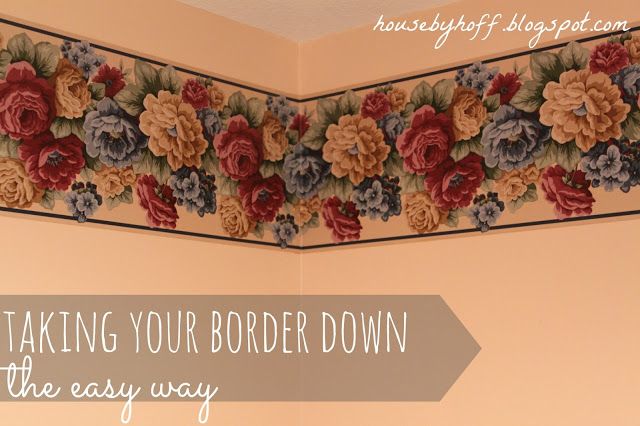 We've got you covered, from necessary safety steps to essential techniques. Plus, find pro tips, including how to make a homemade wallpaper remover using fabric softener.
We've got you covered, from necessary safety steps to essential techniques. Plus, find pro tips, including how to make a homemade wallpaper remover using fabric softener.
How to Remove Wallpaper
What to Know Before You Start
Safety first. Removing wallpaper is going to be messy and wet (or at least damp) in the process, so make sure you start by turning off your electricity and taping off any outlets that are in the area where you are working (you'll want to remove the outlet covers so you can get to the wallpaper underneath).
We also recommend you start with a little mental preparation because the process will likely test your patience. Taking that wallpaper down can take lots of time and create a sticky mess (make sure you cover your baseboards and floors!), and midway through you might just question why you decided to do it in the first place. But it is doable, and the steps aren’t all that complicated. Give yourself about a weekend, give or take depending on square footage. By the end, you’ll have a nice clean wall ready to bring your next design vision to life.
Give yourself about a weekend, give or take depending on square footage. By the end, you’ll have a nice clean wall ready to bring your next design vision to life.
Liquorice//Getty Images
Master This 3-Step Technique: Score, Wet, and ScrapeFirst, test a wallpaper seam with the tip of a metal putty knife, taking care not to gouge the drywall with the knife. If the paper comes up and peels off easily, you’re in luck! Peel away. If it doesn’t, you’ll need to soften the glue before you can strip the paper off.
Tip: Don’t use a plastic putty knife; they’re too thick to get under the paper. Also, consider filing down the edge of your metal putty knife so that it’s a bit more rounded. This will help you to avoid accidentally gouging your drywall when trying to lift up the paper.
To do this, grab yourself a wallpaper scoring tool, and roll the tool over the wallpaper in small sections.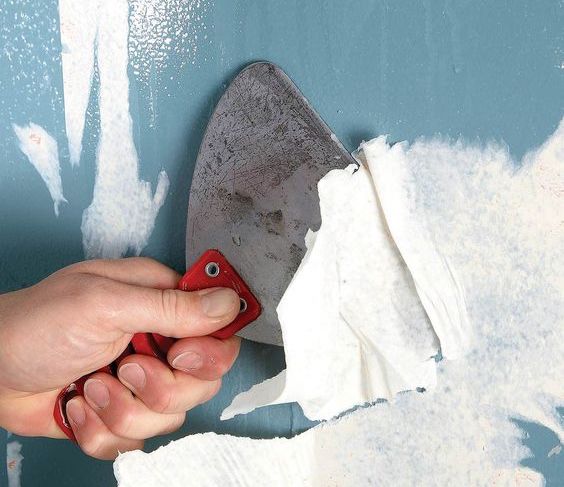 The scorer will create small tears in the paper (don’t press too hard or you’ll damage your wall), which will allow either water or a wallpaper stripping solution to soften the glue underneath the paper.
The scorer will create small tears in the paper (don’t press too hard or you’ll damage your wall), which will allow either water or a wallpaper stripping solution to soften the glue underneath the paper.
Spray the torn area of the wallpaper with the water or paper stripper (or dampen it using a wet sponge), and let sit for a few minutes to work on the glue.
Tip: Some suggest using a one-to-one mixture of fabric softener and hot water for this! The hotter the water, the better, so wear gloves.
Test a small area using your fingernail—if the paper comes off easily, you’re in business. If not, repeat the wetting process and let it sit a bit longer to do its thing.
When the perforated portion is wet and peels off easily when you test it, use the corner of your putty knife to strip off the paper. Don’t be surprised if the glue stays behind; we cover that piece of the puzzle in the next section.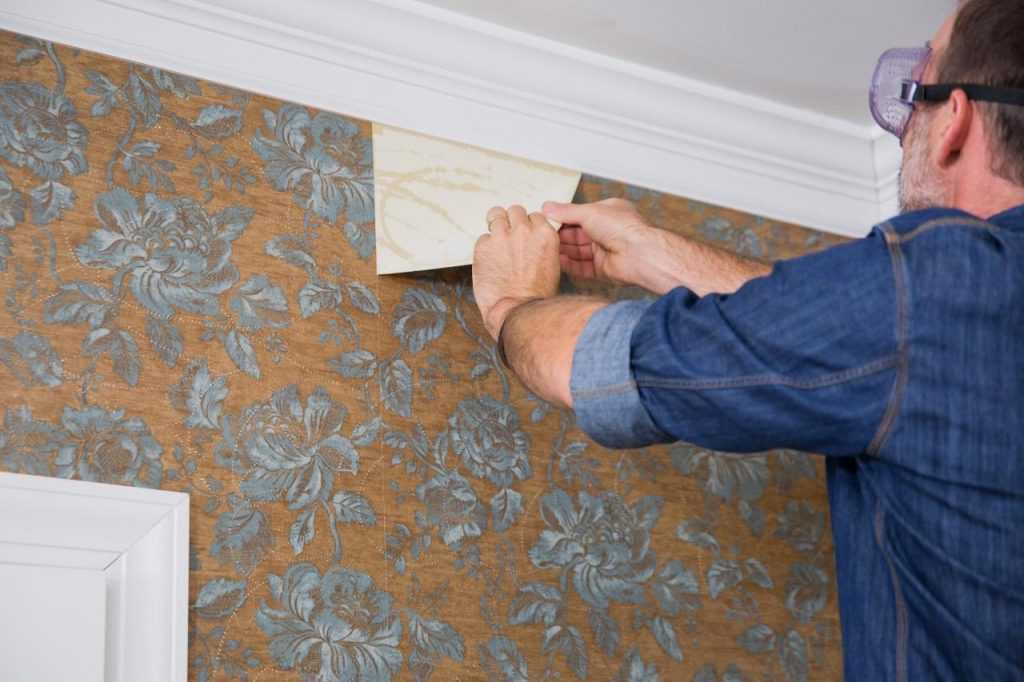 Repeat the entire process—scoring, wetting, scraping—until the wallpaper is gone.
Repeat the entire process—scoring, wetting, scraping—until the wallpaper is gone.
After you've removed all of the paper from a wall, you'll probably have sections or spots sticky with adhesive. The easiest way to remove these is to scrub the wall with hot soapy water (try liquid dish soap) and a sponge or wash cloth. You want to get all of the residue off the walls, so don't be tempted to skip this and paint right over it. You'll risk creating a mess that won't work well for painting or repapering.
Tip: Really having a hard time removing the glue? Try upping your game to a gel stripper.
How to Remove a Wallpaper BorderWallpaper borders are removed in the same way as full panels (see instructions above) with the added challenge that most, if not all, of the work takes place from a step stool or ladder.
Gwendolyn Plath//Getty Images
Wallpaper that's decades old can be removed following the above tips and methods, too, but you may have to put a good deal of elbow grease into it, depending on whether it was professionally installed or not (professional installs tend to be harder to remove than DIY jobs). If your home is older, you may have plaster walls instead of drywall—the latter of which is softer and more prone to dampness and gouging—so be extra careful.
This content is imported from OpenWeb. You may be able to find the same content in another format, or you may be able to find more information, at their web site.
How to Remove Old Wallpaper Quickly and Easily: Best Ways and Life Hacks
Preparing for Wallpaper Removal
Before you start dismantling, it is important to prepare your workplace. The old coating does not always come off easily - tools should be at hand.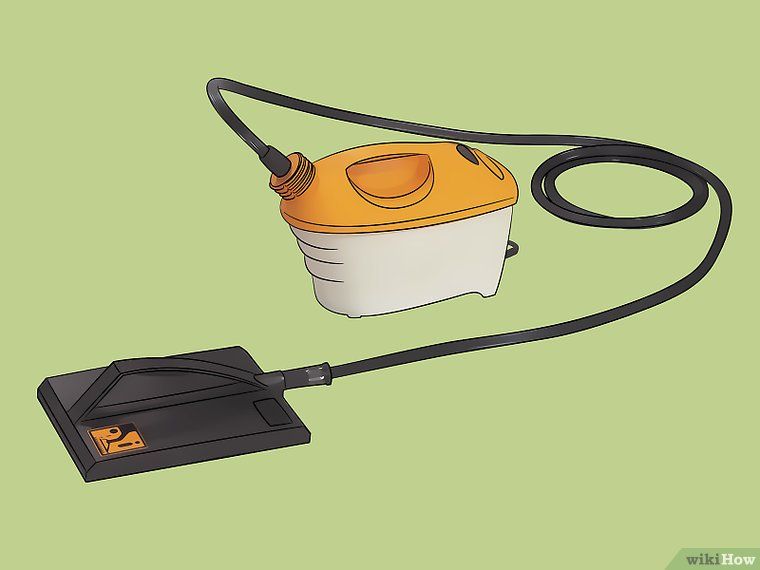 Equally important is safety.
Equally important is safety.
Precautions to be taken
It will not be possible to remove the old coating completely clean. Along with the wallpaper, plaster, old paint, dust can leave. For the safety of furniture or floors, you need to prepare the room.
Room preparation:
- Completely turn off the electricity in the room.
- Cover sockets and switches with masking tape or stationery tape.
- Remove furniture.
- Place film or newspapers on the floor.
- Seal skirting boards.
- If furniture remains, move to the center and cover.
- Leave a wet cloth at the entrance to keep dust out.
What tools are needed for dismantling?
Different equipment is used to remove the old coating. The material matters - some wallpapers are easily removed, others need to be wetted or treated with a special compound. But there is a list of basic tools.
Needed:
- Gloves.

- Spatula.
- Bucket of warm water.
- Dishwashing liquid.
- Roller.
- Sponge.
- brush with metal bristles.
- Wallpaper wash.
- Iron.
Basic methods and means for removing old wallpaper
Each material has its own characteristics. How to shoot depends on the type of old canvases.
With water
The simplest and most obvious method. By wetting, you can easily remove old self-adhesive, non-woven, paper and even vinyl wallpapers.
Tools:
- Water bucket at room temperature.
- Roller.
- Construction spatula.
- Stationery knife.
Procedure:
- Drop dish detergent into water, stir.
- Moisten the roller, run it over several strips of wallpaper.
- Wait - material should soften. Pry off the canvas with a spatula at the junction, remove.
- Clean the wall of small pieces with a knife.
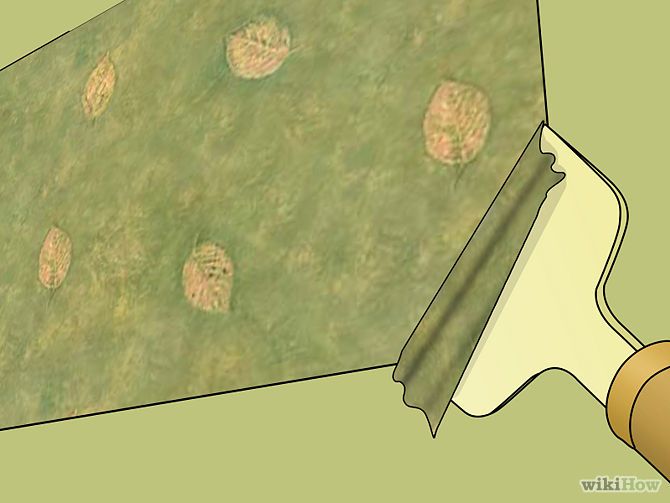
Video
The full process can be seen on the video.
Mechanical (steam and needle roller)
Almost any old coating can be easily removed with this method. The presence of a steam generator is a great bonus in work. An alternative to it is an iron, but you will need a sheet or a piece of cotton.
Which wallpaper is better to use?
Suitable for paper, non-woven, vinyl wallpapers.
Inventory:
- Steam generator or sheet iron.
- Water container.
- Wallpaper tiger (aka needle roller), but a clerical knife will do.
- Spatula.
How to remove the wallpaper with steam:
- Go over the canvases with a spiked roller.
- Moisten a sheet, wring out and lean against the wall.
- Set the maximum temperature on the iron.
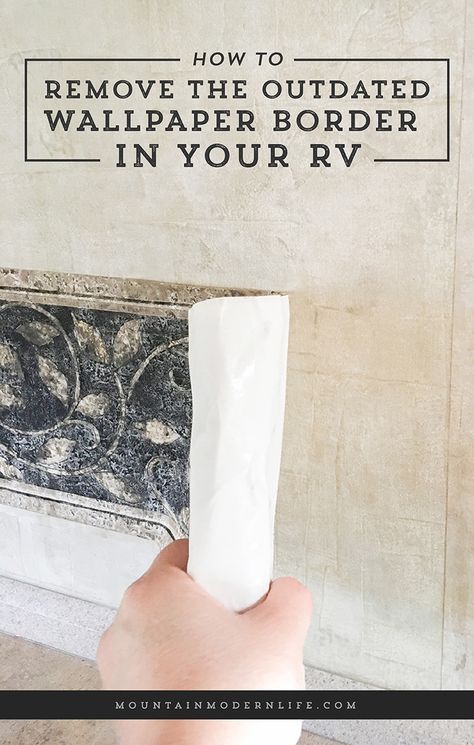
- Iron the sheet several times.
- Pry off with a spatula and quickly remove.
Video
Lifehack on removing wallpaper with a steam generator, as well as comments can be viewed on the video.
Special chemicals
If the wallpaper is tight, it is difficult to remove it with traditional methods. To save time and achieve the best result, special chemical solutions are often used. They are sold in construction supermarkets, they help to quickly remove old canvases.
Which wallpaper is better to use?
Used for non-woven, paper, washable, textile wallpapers.
Equipment required:
- Roller.
- Rubberized gloves.
- Basin with water.
- Wallpaper tiger (if not, then you can use a knife).
- Spatula.
Step-by-step instructions
- Dilute the substance with water according to the instructions.
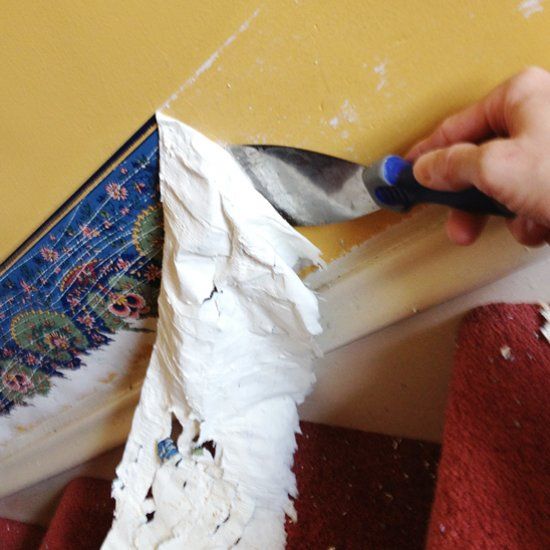
- Roll the walls with a wallpaper tiger or pierce with a knife.
- Apply the compound to the walls with a roller.
- Leave the wallpaper to soak (exact time is on the package).
- It is enough to pry the sheet with a spatula and tear it off.
Video
See video for details.
Removing old Soviet wallpaper requires effort. Often they are pasted on a layer of newspapers, under which there is old plaster. To begin with, you can try the traditional method - soak with water and tear off. If not, use liquid.
Removal features depending on the substrate and material
Different coatings have their own characteristics. This must be taken into account when choosing a removal method.
- Vinyl. They come off easily. It is enough to soak them in water and remove them after 20-30 minutes.
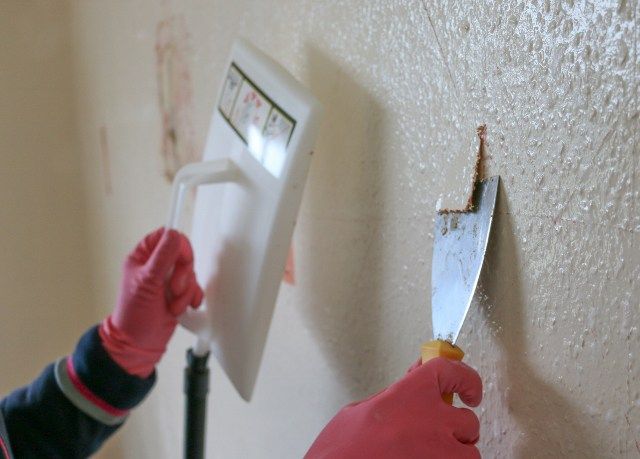
- Paper. They come off easily if they are glued to high-quality glue (universal "Metilan"). Removed with a knife or spatula. If they do not come off, soak with water or steam with an iron.
- Non-woven. They have two layers, the top layer is removed. Ideally, it is better to steam old canvases or apply a wallpaper remover.
- Liquid. They are afraid of moisture. To “unstick” them, it is enough to soak the wall, after a while the coating will begin to lag behind the walls.
- Washable. Treated with a protective composition that does not allow moisture to pass through. It is necessary to run the walls with a spiked roller, apply wallpaper remover, remove after a while.
- Glass fiber. Take off easily. It is necessary to tear the sheets, fill the space under them with water. After 45 minutes, they will start to fall behind. Or immediately fill with a special liquid and easily tear off.

- Self-adhesive. Old sheets come off easily; to speed up the process, you can moisten them with boiling water or use a building hair dryer.
How to peel off the wallpaper depending on the type of surface?
When removing old coatings from walls, the type of surface must be taken into account. This will simplify the work and save you from additional manipulations after.
Drywall
The material is not moisture resistant. It will not work to use water or a chemical composition, as it will lead to deformation of the drywall. You can remove the old coating with a steam (iron) or rip it off manually, helping with a knife. Work carefully so that the knife does not scratch the drywall.
Concrete walls
Concrete is resistant to water and high temperatures. You can remove the old coating in any way, you need to build on the material of the canvases.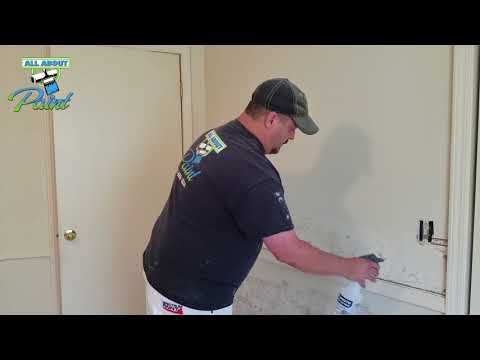 Paper can be easily removed with water, washable, textile, vinyl and others can be removed mechanically or by chemical composition.
Paper can be easily removed with water, washable, textile, vinyl and others can be removed mechanically or by chemical composition.
Wooden surface (plywood, chipboard, fiberboard, gypsum board)
Wood and plywood are afraid of moisture, and if the surface was not additionally processed before wallpapering, it will not be possible to remove the canvas by soaking. Steam can be used to remove the coating from painted walls. A win-win option is a composition for removing old wallpaper. It does not deform the wooden surface and will help to remove the coating with a minimum of time. Or gently peel off the wallpaper with a knife or spatula.
The best way to quickly and easily remove the wallpaper at home
To remove the coating quickly and effortlessly, it is recommended to use a wallpaper remover. Chemical products are a convenient option for the home - they are harmless to health, suitable for all surfaces (wood, drywall), a minimum of dirt and dust in the process.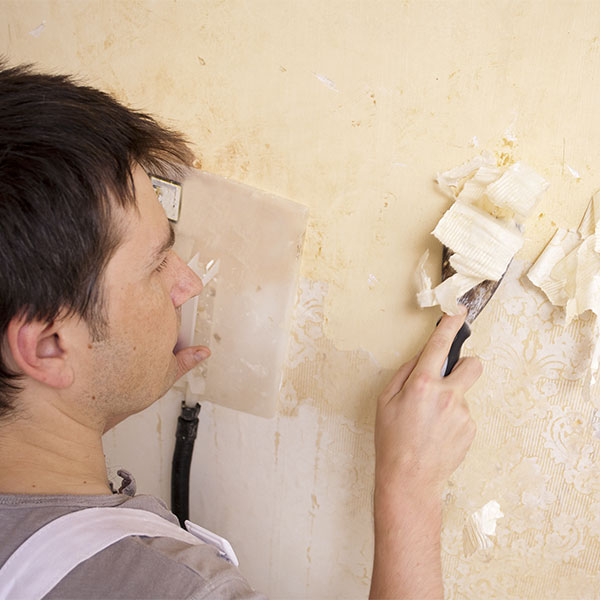 You can remove the old canvases and steam - the result is good, but if there is no steam generator, laborious work awaits.
You can remove the old canvases and steam - the result is good, but if there is no steam generator, laborious work awaits.
How to remove old ceiling wallpaper?
Removing old wallpaper from the ceiling depends on the material. It is inconvenient to work with an iron on the ceiling, soaking with water or a chemical solution remains.
Needed:
- Stepladder or table.
- Water tank.
- Spatula.
- Roller.
- Masking tape.
- Film.
Prepare goggles, gloves, headwear, old clothes from equipment.
Step-by-step instructions:
- Remove furniture.
- Turn off the electricity, remove the chandelier (preferably).
- Seal sockets, plinths with adhesive tape.
- Cover the floor.
- Moisten the roller with water or a special water-based solution.
- Wet the ceiling.
- Wait 25-40 minutes until the sheets are soaked.
- Gently pry off the sheet with a spatula and remove.
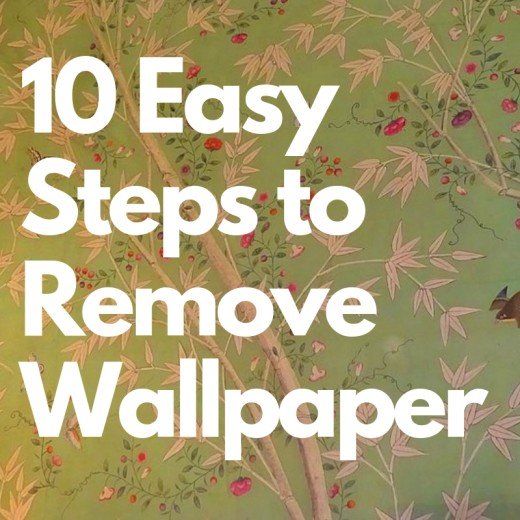
- Do not turn on the electricity, wait for the ceiling to dry.
What to do if the wallpaper is pasted on PVA glue or bustilat?
If the old coating is glued to PVA glue, it will not be possible to tear it off with a spatula or scraper. Ideally, you need a device - a grinder or a grinder with sandpaper nozzles. The process is dusty, but the result is worth it.
If you don't have such tools in your arsenal, a needle roller will help you out. It takes a long time to scratch the old wallpaper. At the end, treat the walls with a wallpaper remover, cut them off.
To remove old wallpaper pasted on bustilat, you need to work for a long time with a scraper, a metal brush, sandpaper.
- If there is putty under the wallpaper, this method is not recommended, so as not to have to refinish the walls.
- For paper sheets, the steam method is suitable.
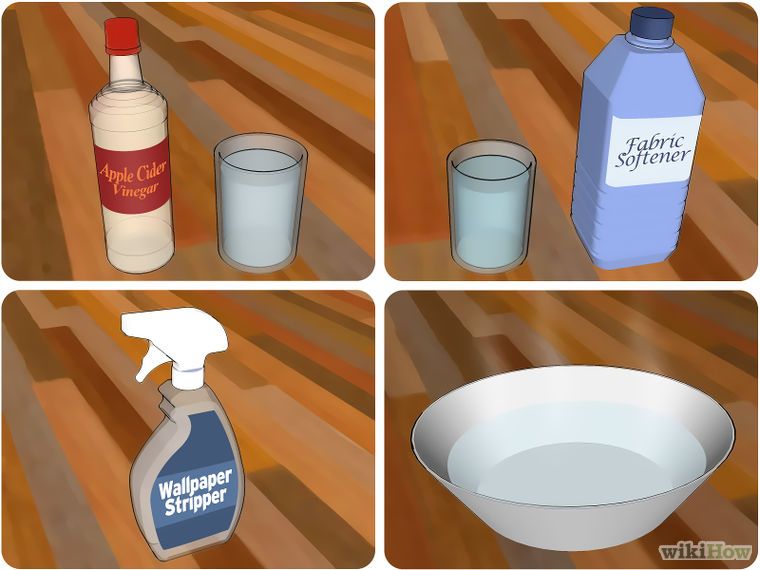
- Washable, vinyl and textile wallpapers are best treated with a chemical composition, and then safely removed.
How to peel in problem areas?
More time and patience will be required to work. This applies to stripping old wallpaper in a room with a stretch ceiling and behind the batteries.
From under the stretch ceiling
You will need:
- Sharp knife.
- Wide spatula (preferred).
- Water or adhesive thinner.
Procedure:
- Apply the spatula vertically to the ceiling.
- Cut the blade along the edge of the spatula with a knife.
- Reattach the spatula by shifting it.
- In this order, cut the wallpaper on the border with the ceiling around the entire perimeter.
- Moisten wallpaper with water or mortar, remove.
Behind the battery
If the radiator can be removed, no problem. Behind a stationary battery, you will have to wield a small spatula or knife. The result depends on the size of the radiator and how far the hand reaches.
Behind a stationary battery, you will have to wield a small spatula or knife. The result depends on the size of the radiator and how far the hand reaches.
Removing old wallpaper with your own hands without the involvement of craftsmen should not be difficult. Manufacturers offer special chemical compounds that can even cope with tightly glued old sheets. The main thing is to decide in advance on the method of removal, prepare inventory and a room.
90,000 Wallpaper by wholesale from the warehouse, “Region project” a reliable supplier of wallpaper Reliable partner
Wallpaper stores
We sell wallpaper wholesale and help partners to conduct business Effectively
measures
Customers
Systems for the wallpap work with personnel, IT - solutions, marketing, assortment management
Our products
COLLECTION: Gradient
COLLECTION: Uranium
COLLECTION: Charlotte
COLLECTION: Golden
Whole catalog
You can just work …
And you can work with maximum efficiency, reduce costs and increase profits.
This requires a system.
We have 11 wallpaper stores and a proven smart store management system. You can implement this system in your business in whole or in parts. For effective management of assortment, marketing, personnel.
Get advice
What is included in the system
School
professional sellers
Video
The OBOI.RU Professional Sales School is a special project to train professional sales consultants for wallpaper stores.
If your salespeople:
- lose customers and sales
- work "on a whim", without knowledge of sales techniques and rules of communication with customers
- just sit through the shift and are not interested in the results of the work
then the School is the very pill that will help increase the efficiency of salespeople and take sales to a new level.
Quality work with sellers is relevant both for existing stores with a full staff, and for new outlets. The seller is the main point of contact between your business and the buyer, so you need to:
- correctly look for
- correctly hire
- teach correctly
- correctly test knowledge and skills
Is it worth investing in hiring and training salespeople? What are the guarantees that it will pay off? How can the "School of Sellers" help? look a short video in which the director of OBOI.RU answers these and other questions.
Leave a request for a free consultation on prices and conditions for our partners
IT - EMS platform
specialized smart program for monitoring business indicators for making effective business development decisions
It systematizes data from your accounting system (1C, My warehouse, etc.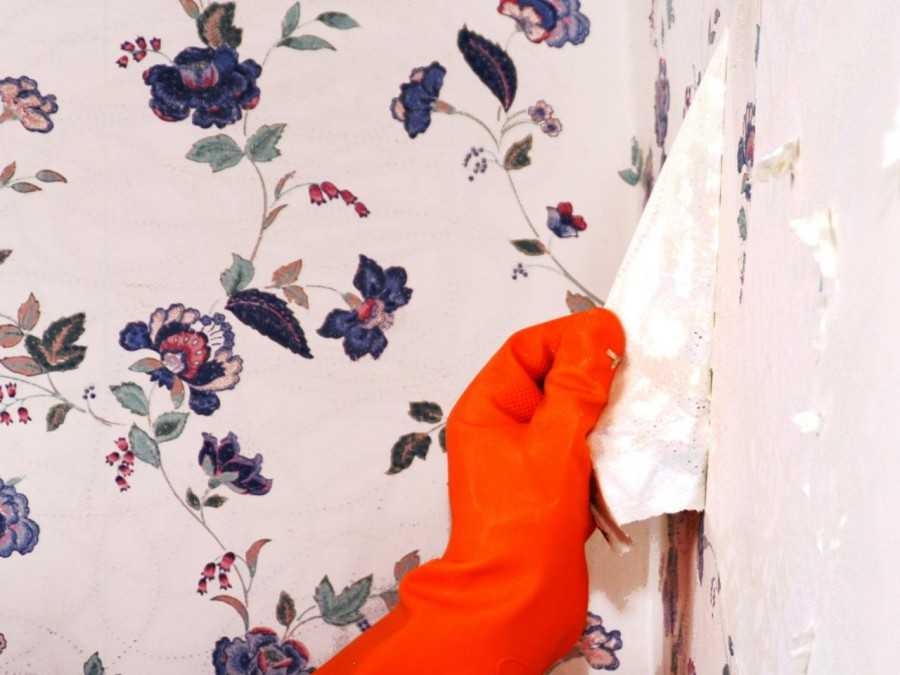 ), structures and presents visually.
), structures and presents visually.
You see all reports and indicators online, and not only when you close the monthly report. Therefore, the results of all solutions can be seen immediately and they can be quickly changed or, for example, strengthened.
2.1
Control unit
assortment
What tasks will it help to solve:
- Determine which collections and articles work most efficiently, and which - on the contrary
- Decide which collections to stock and which are most likely to hang
- Understand if sales, discounts and promotions are needed
Makes a complete analysis of the range and sales by article or collection. Visual system of dashboards with depth indicators assortment, turnover and the degree of "health" of the store.
The assortment block helps to make decisions based on data, rather than subjective, albeit expert, opinion.
2.2
Vendor interface
What tasks will it help to solve:
- All the information necessary for the work of sellers, in one place and in close access
- The number of questions to the manager is reduced many times over
- The loyalty of salespeople to the employer is growing, because the motivation system is presented in a transparent and understandable way
Convenient interface with access to work schedule, payroll calculation, training section. Removes many questions of sellers, increases loyalty to the employer due to the transparency of work and saves the manager's time.
2.3
Marketing control unit
Top marketing metrics on one screen.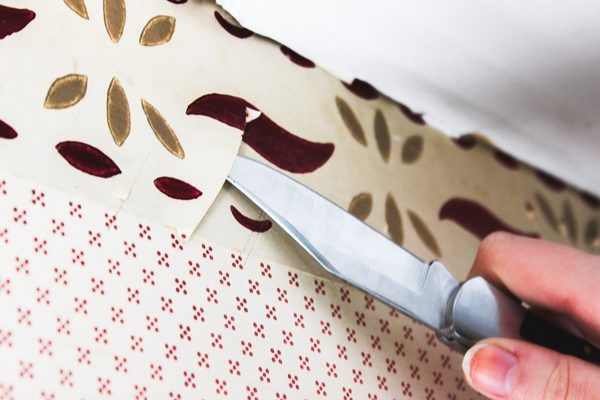
What tasks will it help to solve:
- Monitor the effectiveness of marketing activities
- Plan and control the advertising and marketing budget
- Track loyalty index, store traffic, conversions, etc.
The system will work correctly when fully integrated with your accounting program. You decide what data you will transmit to the platform.
Bossboard
What tasks will it help to solve:
- You can control the main business indicators online, from any device
- Quickly see deviations from the norm and, if necessary, make a working decision
- Quick access to basic information: schedules, plans, addresses and phone numbers, etc.
Comprehensive information for the manager with the main commercial performance indicators. All business indicators online on the screen any device.
All business indicators online on the screen any device.
Why do you need a smart control system
1
Objective decisions based on data
2
Reduced time for operating system
3
Online operational control, decisions can be made quickly
4
Business growth - KPI
How smart systems help to conduct business
to 3%
reduced stores
by 150%
increased the number of repeated purchases
NPS (consumer loyalty index) on our network
company
Reliable partnership is the most important thing!
A word from the CEO
Our mission is to help our clients grow their business.
REGIONPROEKT is not just a company that ships wallpaper from a warehouse. This is primarily an assistant who knows how to solve problems and pains of clients.
We work for the business of our partners, because without their growth we ourselves will freeze in one place.